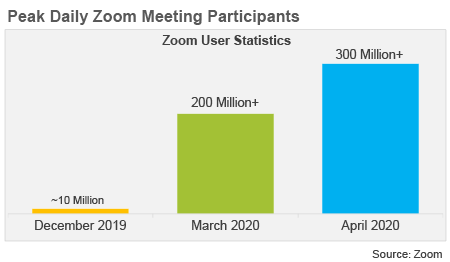Good Riddance To 2020
But Wait...Eight Positive Trends Worth Keeping For The Future
by Bonnie Janzen
-
2020 and its challenges have been extremely difficult to navigate!
I say GOOD RIDDANCE to 2020, and I believe most of us feel the same way!
There are a million reasons to say goodbye and good riddance to 2020, including the suffering, the loss, the financial hardships, the anxiety, and the damage to our mental health, happiness, and growth.
As we see the first vaccines for COVID-19 rolling through the U.S., we eagerly anticipate a return to normalcy (or something close to it). Remember how you felt when you used to casually meet up with friends or colleagues for coffee, for a quick lunch, or for a happy hour, a movie, or a dinner party? Remember how you felt when you planned family parties and holidays—and you never gave a thought to where anyone had been in the previous 10 to 14 days, or who they were with at that time?
Despite the long list of negatives from 2020, there are several positive trends from the year, including:
- Strengthening relationships. This can include romantic relationships and relationships with friends and close family members. A Monmouth University Poll from May 2020 shows that romantic relationships have weathered the pandemic especially well. About three-quarters of Americans with a romantic partner said their satisfaction with their relationship hadn’t changed since the COVID-19 outbreak. More than three times as many said their relationships had gotten better than said those relationships it had gotten worse.
- Connecting with loved ones. Perhaps we’re understanding better how precious life is, given the loss of so many in such a short time. In addition to there being more phone calls, emails, text messages, and drive-by visits, Zoom and other video-conferencing companies have experienced explosive growth. Zoom is easy for consumers and businesses to use. Connecting with your “group” outside of your household, like your “group” from places of worship or your “group” from other communities, was referenced by my colleague Clay Dethloff in “Where’s My Herd?”
You can see the growth in Zoom users from 10 million to 300 million between December 2019 and April 2020.
Source: Zoom
- Improving communication between teachers and students. As we have seen the explosive growth of Zoom, these trends also include schools and teachers. Many teachers have gone above and beyond to reach out and engage with their students and keep them involved. It goes beyond lesson plans, technology, problems with internet access, questions about schedules, and problems studying at home with younger siblings, etc.—teachers often reach out just to show they care. Zoom will probably continue to enhance learning even when in-person school becomes the norm again.
- Focusing on self-care and mental health. During this very stressful ongoing pandemic, it has been more important than ever to find ways to take care of oneself, which can include at-home gyms and work-outs, massages, or meditation. Decision Analyst has conducted ongoing tracking studies of consumer perceptions and attitudes during the COVID-19 pandemic and has reported increasing negative emotions. Some of the key positive trends include mindfulness, more time out in nature, journaling, and goal setting. It has given us much more solitary time for reflection and reassessment of our lives. In addition, the trends toward telemedicine have allowed for counseling to be provided in safe in-home environments, making those options more accessible in this era of social distancing. The Decision Analyst Covid-19 Consumer Reactions Report
- Continuing work-from-home/work remotely. Some employees were able to work from home during stay-at-home orders. Given the adaptability of IT, video-conferencing, and other tools, many companies have transitioned to a remote-working model. According to the PEW Research Institute Social Trends, 71% of employees currently work from home, compared to 20% prior to the pandemic outbreak in the U.S. More than half (54%) would like to work from home after the outbreak ends, providing more flexible scheduling, more time with family, and more time for travel (eventually) even when COVID-19 does not require this arrangement.
- Increasing emphasis on diversity and inclusion. According to a Glassdoor survey conducted by The Harris Poll in September 2020, more than 3 in 4 (76%) job seekers and employees report that a diverse workforce is an important factor when evaluating companies and job offers. Job seekers and employees say they want to work at companies that truly value diversity and inclusion as part of their culture. More and more of the top companies in the U.S. have announced major initiatives to improve their diversity, equity, and inclusion efforts for recruiting and promoting within their organizations. These trends are across many industry sectors and global brands.
- Increasing focus on the environment and sustainability. This includes, but is not limited to, key elements that impact consumers’ purchase decisions more each year, and especially during 2020:
- Reduction in energy consumption
- Changes in energy production
- Increased demand for plant-based foods for the environmental benefits
- Declines in fast fashion
- Carbon negativity gaining in popularity among corporations
- Water conservation
As consumers have had more time at home and more time for introspection, the environment has become an important priority, if they have not been financially impacted by the pandemic. This has accentuated the trends that were already occurring.
- Supporting small and local businesses. As the COVID-19 outbreak has raged, consumers have been taking care of the businesses that have always been there to serve them. Even with government support in the form of the CARES act in March 2020, COVID's negative impact on small business owners has been devastating. However, support has come from Small Business Administration, Google, Facebook and American Express, Visa, Mastercard and Discover in terms of advice. Local cities and Chambers of Commerce were supporting their businesses with promotion and advice also. As local businesses made changes to accommodate mask orders, social distancing and reduced capacity, and to offer digital ordering and/or curbside pick-up, some were able to pivot to retain employees and stay in business. Consumers are becoming more cognizant of the impact their dollars have on businesses in their local areas, and they want to encourage and support their local economies.
2020 has been a very challenging year in many ways. We’re interested in continuing the conversation with you and your organization about the challenges you’ve faced, as well as what positive trends might be impacting your business. We are interested in discussing the negative trends affecting your business, too, because in the negative trends, opportunities exist. We can assist your team by providing in-depth learning about consumer attitudes and motivations. We can help you improve your innovation process, product pipeline, branding strategy, advertising, communications, and marketing plans for the future as we continue to face the challenges ahead and prepare the coming year.
About the Author
Bonnie Janzen (bjanzen@decisionanalyst.com) is an Executive Vice President at Decision Analyst. You may contact her at either 1-800-262-5974 or 1-817-640-6166.
Copyright © 2021 by Decision Analyst, Inc.
This posting may not be copied, published, or used in any way without written permission of Decision Analyst.




